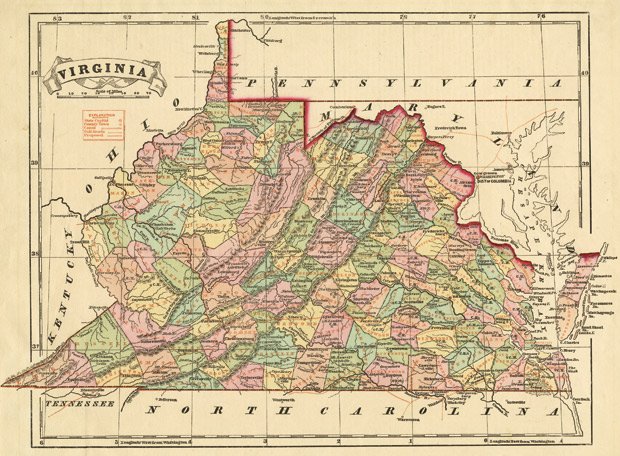The Great Kidnapping of Adam Smith of 1824


The year was 1824. John Quincy Adams, Andrew Jackson, William H. Crawford, and Henry Clay are locked in a Presidential election where no major winner is declared, and it eventually goes to the House of Representatives for the deciding vote. Adams is declared the winner. There are 24 stars on the U.S. flag and The Marquis de Lafayette arrives in the U.S. to tour all 24 states. Slavery was a top interest in national politics, and just as any other area, Meigs County took interest in the issue. Most of Meigs County’s citizens supported the anti –slavery movement including one of Meigs County’s first settlers, Hamilton Kerr. The Underground Railroad had been running through Meigs County for about a year, beginning sometime in 1823.
After slaves would cross the Ohio River, their first stop was at the home of Hamilton Kerr, near the mouth of Leading Creek. Kerr hired Adam Smith to act as a guide for fugitive slaves heading north; he would follow the same route taken by slaves who had been freed by their masters. At this point the former slaves would follow Leading Creek and Little Leading Creek through Rutland Township to the home of Horace Holt, a prominent manufacturer of weaving reed. From here, fugitive slaves would travel toward Albany. Despite being a well-traveled route, Smith would often run into trouble, either from lack of needed aid for the runaways or from their former owners, many of whom were from Virginia. (Note: West Virginia had not yet been made a state, and slavery was legal in Virginia, which was on the Southern border of the Ohio River at this time.)
Slave owners on the Kanawha and Ohio Rivers upriver from Point Pleasant, Virginia (now West Virginia) sent out detectives on both sides of the Ohio River to locate fugitive slaves. They came to the conclusion that Adam Smith was guilty of assisting fugitive slaves in their escape northward. In October of 1824, four men from Virginia arrested Smith and forced him into the Point Pleasant jail. The men took Smith by force and with no authority of law, all the while refusing to accept bail money for Smith’s release. The people of Meigs County saw “[t]his gross violation of the most sacred rights of the citizens of Ohio, showing such contempt for the state’s jurisdiction, that it excited universal indignation and open violence was threatened to release Smith from his illegal confinement.”
A vigilance committee was formed and set up lookout points ranging from Colonel Jones’ Landing (where Mill Street in Middleport meets the Ohio River) and Smith’s Landing where the mouth of Silver Run meets the Ohio River. Additionally there were lookouts out Silver Run to the home of John S. Giles in Rutland. These lookouts communicated through horns from station to station and an alarm would circulate to every lookout within 15 minutes if any suspicious person or group were seen.
Six weeks have passed since Adam Smith was arrested, and he was still being held in the Point Pleasant jail. Around the same time, the Wagner family, a wealthy slave owning family, put one of their slaves in the jail with the plot to murder Smith. The slave was promised if he killed Smith, the family would grant the slave his freedom. Once Ohioans were made aware of this information, preparations to break Smith out of jail were put into effect. John S. Giles convinced Smith’s guards to allow Giles to bring Smith clothing, and with that, Giles told Smith to be ready to escape at any moment.
In November, Giles, along with Martin Meeker, William Hatch, John Woods, David Tyler, Obediah Ralph, William Terry, and Charles Giles met at the mouth of Silver Run and, in blackface, headed downriver in a pirogue (small boat) towards Point Pleasant. One man was armed with hunting rifles, pistols, and a flint lock musket loaded with seven rifle bullets. Another carried a dragoon or horse pistol loaded with three rifle bullets. These men were prominent members of the county due to their courage and great physical strength.
The men knew that the Point Pleasant jail was heavily guarded but feared the imminent danger to Smith’s life. The crew floated with muffled oars and landed 11 miles downriver from Silver Run at Point Pleasant. Martin Meeker and Charles Giles each took a musket and confined four guards to a room in the upstairs of the jail. Downstairs one of the party took an ax to the prison door, busted it down, ran inside the cell, grabbed Smith, half asleep in his bunk, and attempted to make their escape. The party began to make a retreat back to the river with Smith, but the guards came out onto a platform on the second story of the jail and prepared to fire.
Rescuer John Woods fired his dragoon pistol, but it misfired. The audacity of Woods’ action kept the guards from immediately firing upon the rescue party. The party was getting into the boat when a jailer and a guard who followed the party began firing upon them. William Terry returned fire upon the guards and hit one in the ear, causing him to fall to the ground. As the boat made it to the middle of the river, additional guards appeared and fired upon the rescue party. The pirogue was bombarded with musket balls, requiring them to turn broadside to the shore while all the men, except David Tyler, lay in the boat in an attempt to shield themselves. As a result, Tyler was shot in the chest, but survived with a 5 inch scar.
The boat eventually made it downstream out of range of all the guns except that of one jailer who followed them and took up a position behind a sycamore tree on the edge of the riverbank. His shots were “an annoyance to the rescue party.” John S. Giles gave the order for the men in the rescue party to begin firing at the jailer. One of the shots hit the tree and caused wood splinters to burst from the tree and severely injure the jailer’s eyes. The rescue party then had to abandon the boat and walk home, making sure to be quiet and not disturb their spouses, who were unaware of the events that their husbands had planned and carried out.
The Virginians in Point Pleasant were furious over the events that occurred and talked of going to Meigs County to capture John S. Giles, John Woods, and Elisha Ayres to take them to Point Pleasant to be lynched. However, they opted to take a more lawful approach and had indictment charges brought against Giles, Woods, and Ayres. James Pleasants, Governor of Virginia, made a requisition to Jeremiah Morrow, Governor of Ohio, to surrender the three to Virginia authorities. Morrow agreed and deputized Colonel Lewis of Virginia to make the arrest. Once Colonel Lewis crossed the river into Meigs County, citizens there were unaware of his authority and prepared to make a defense. Colonel Lewis went directly to the county seat in Chester and called upon Thomas Rairdon of Long Bottom, Constable Dickey, of Chester Township, and a deputy sheriff with a last name of Newsom. The four men went to the home of John S. Giles to make the arrest. Giles, Woods, and Ayres went without resistance. Halfway between Giles’ home and Point Pleasant, a party of twelve men in disguise came out of the woods on Sargent’s Hill demanding Giles’ release. Giles convinced the men of Colonel Lewis’ authority from the Governor of Ohio, and that Giles was willing to let the law take its course.
Giles, Woods, and Ayres were placed in the Point Pleasant jail for two months before they were tried. Giles and Ayres were both found not guilty, but Woods was found guilty and fined thirty dollars. Woods refused to pay and refused to allow his friends to pay his fine and decided to serve time in the jail, refusing to leave until they kicked him out.
As the old Ohio flows….









